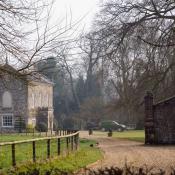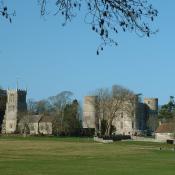The world's largest and finest collection of Armoured Fighting Vehicles, from World War I tanks to the latest main battle tank of the British Army.
The Tank Museum in Bovington is said to have the world's best collection of tanks, a British invention introduced during the First World War that changed warfare forever. Bovington Camp was established in 1916 when tanks were first being introduced in an effort to break the stalemate of trench warfare. The vehicles were returned to Bovington from France after the war was over and the least damaged were put to one side to be used to instruct officers in their history and heritage. The camp still trains all sections of the British Army in tracked vehicle driving as well as repairing and maintaining the vehicles in its workshops.
It was Rudyard Kipling, who visited Bovington in 1923, that suggested they set up a museum. The collection grew significantly after the Second World War, when tanks from both sides were added. The museum finally opened it's doors to the public in 1947 and has continued to expand ever since. Three hundred tanks are spread over five large halls.
The World War One hall centres on the life of T.E.Lawrence, who joined the Tanks Corps in the 1920s when he came to live at nearby Clouds Hill. This hall also houses the world's oldest surviving combat tank, a British tank used during the First World War.
The World War Two hall is the biggest and features the only working example of a German Tiger I tank as well as the last surviving DD tank, complete with canvas screen. The Tamiya hall features post-war tanks including an American M60 and a Russian T72, while the British Steel hall highlights modern conflicts including the Gulf War and pays tribute to the greatest tank ever made, the British Centurion.
The annual Tankfest, which takes place every June on Armed Forces Day, is reputed to be the finest display of moving armour in the world, with action-packed live displays put on by members of the Tank Corps.




